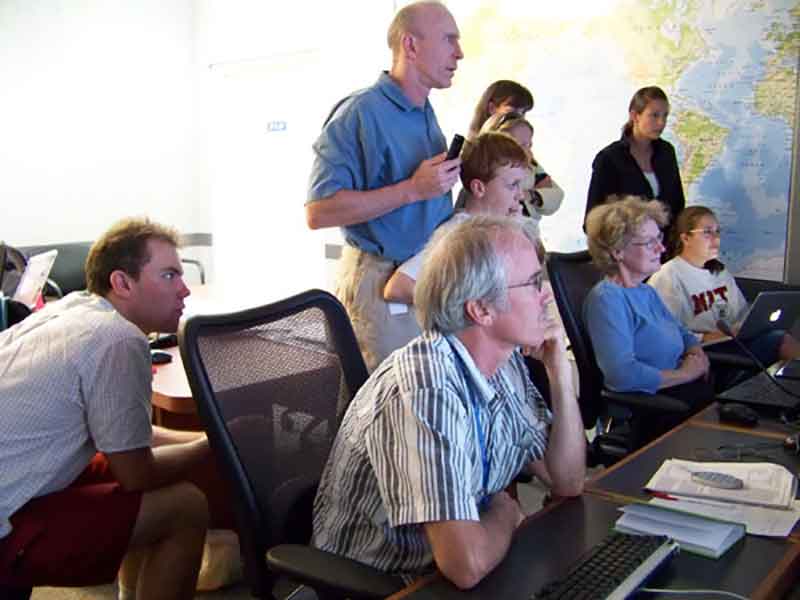
by Randy Visser, Video Engineer/Media Educator
July 24, 2010

Video technology plays a big role in the exploration we are engaged with here on NOAA Ship Okeanos Explorer. Every time I participate in one of our dives and sit at the controls of the remotely operated vehicle camera as we cruise the ocean depths, I marvel at how man has utilized these electronic windows to see beyond the capabilities of our finite, individual human experience. Image courtesy of the NOAA Office of Ocean Exploration and Research, INDEX-SATAL 2010. Download image (jpg, 30 KB).
Video technology plays a big role in the exploration we are engaged with here on NOAA Ship Okeanos Explorer. The ship is outfitted with a variety of cameras. Some of these cameras are used to monitor the launching/recovery of the remotely operated vehicle (ROV) and are mounted at critical angles throughout the ship. The other cameras are mounted on both the camera platform and the ROV itself. The ROV pilots use these cameras as their eyes while diving. Other members of the team, including the scientists, use the images created by these cameras to identify various marine species and environments, helping to guide the pilots and direct the exploration during a dive. And of course, people gathered at the various Exploration Command Centers around the globe use the images to participate in this experience in real time. We also record much of the day’s dive on digital hard drives and sift through the material in the evenings, gleaning highlights that are compressed and transmitted to shore for archival purposes.
When I’m not working on special projects like this, I teach media production and communication theory at a community college in Maine. I often talk with my students about the evolution of video technology and its original use as a tool in the broadcast television industry. Like so many technologies developed for one purpose, people quickly adapt their perspectives, and through human interaction, discover new ways of using it.
Take a look at some of the archival footage of Neil Armstrong’s famous first walk on the moon, back in the 1960s, to understand how this video technology has evolved over time. I’m old enough to vividly remember that experience, shared with all of my relatives on an old black and white RCA TV in our living room back home. We were all stunned in silence at the enormity of the moment. "One giant leap for mankind."

People gathered at various Exploration Command Centers around the globe, such as this one in Seattle, use video images to participate in this experience in real time. Through video images and telepresence technology, we transport ourselves hundreds of meters below the ocean surface and experience the ocean floors together. Another giant leap for mankind? I expect this experience will continue to evolve, much like our ability to watch people in real time as they work in the space lab today, more than 50 years after we first set foot on the moon. Image courtesy of the NOAA Office of Ocean Exploration and Research, INDEX-SATAL 2010. Download image (jpg, 32 KB).
Today, the video camera is a common electronic tool in our society. We casually record images with our cell phones and post them to the Internet in minutes. Our shared video experiences are still evolving and changing the way humans think and behave.
Every time I participate in one of our dives and sit at the controls of the ROV camera as we cruise the ocean depths, I marvel at how man has utilized these electronic windows to see beyond the capabilities of our finite, individual human experience. Like the first moon walk, we transport ourselves hundreds of meters below the ocean surface and experience the ocean floors together. Another giant leap for mankind?
I expect this experience will continue to evolve, much like our ability to watch people in real time as they work in the space lab today, more than 50 years after we first set foot on the moon. Someday, this video technology may provide a common “mass-communication” experience for mankind, and we can begin to better understand our fragile ocean environments. But first, we take this "one small step for man."